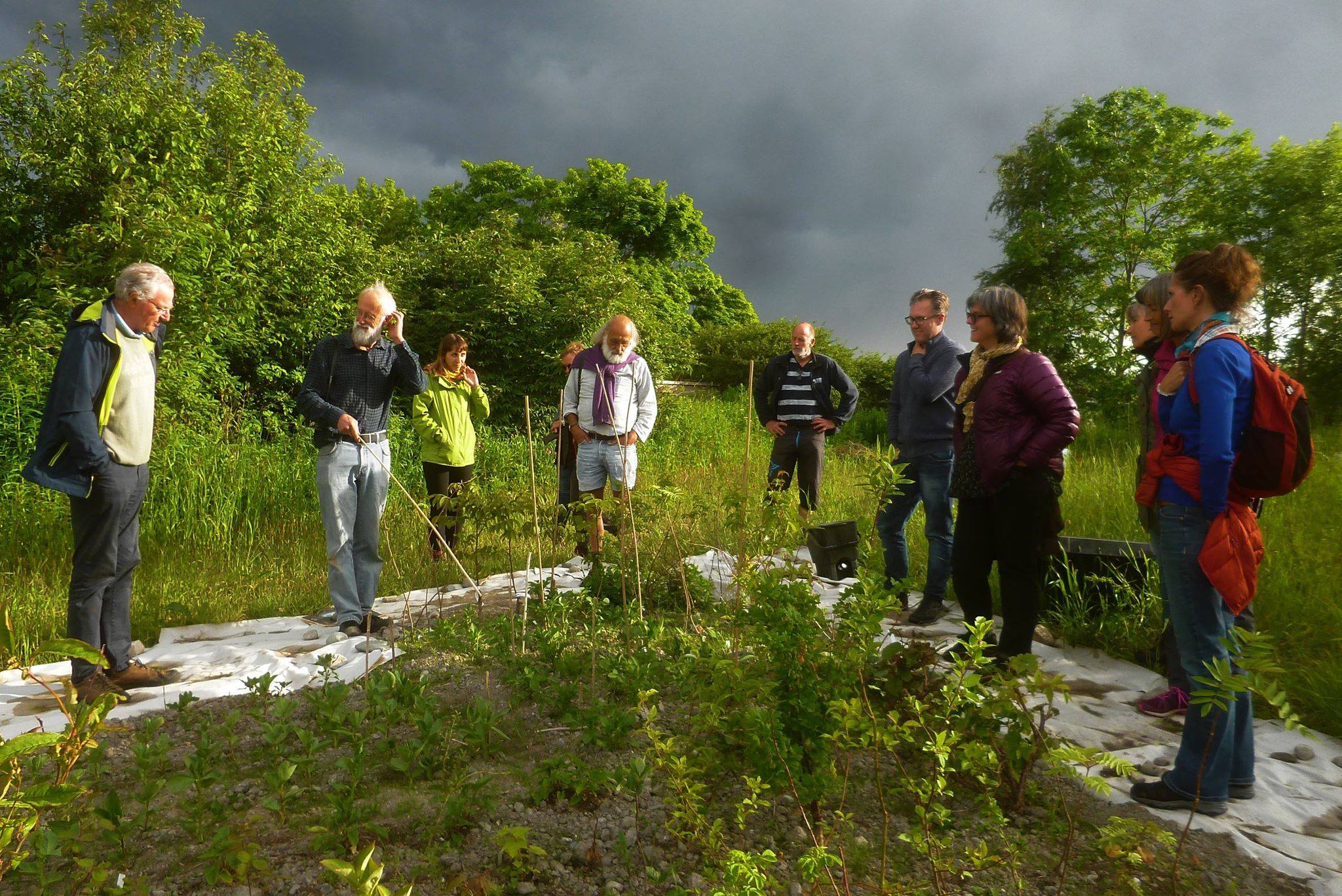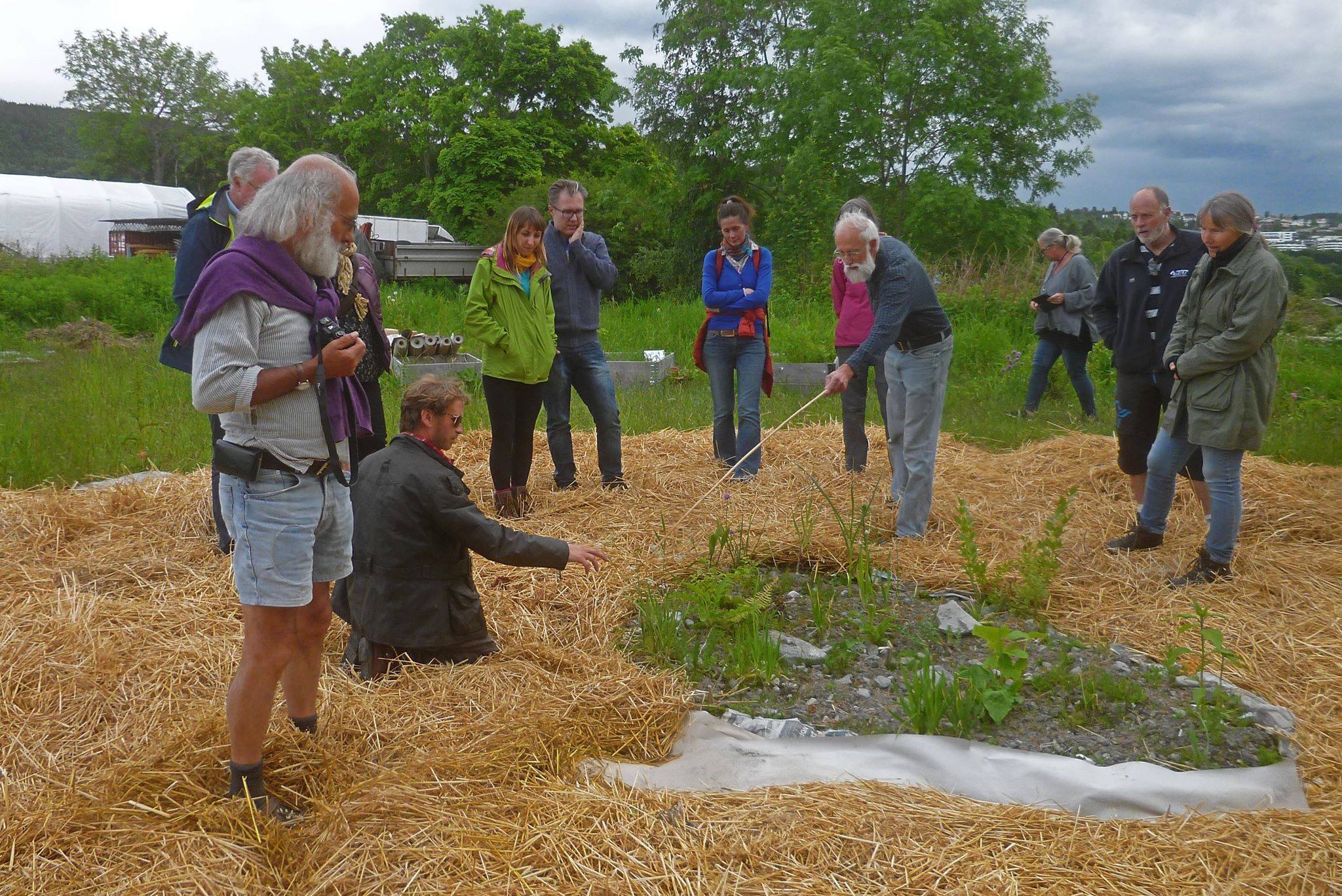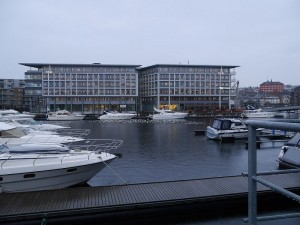





Day 3 of the KVANN (Norwegian Seed Savers) meet was at the Ringve Botanical Garden Open Day in Trondheim. The day started early as I drove one of the participants to the station in Trondheim and then spent a couple of hours collecting some of the ingredients for a multi-species salad. Including plants collected on a walk, talk and forage for KVANN members, we managed 111 ingredients in the salad! Thanks to all who helped make it a very successful and fun weekend!
It was the first time I cycled to my office at the Ringve Botanical Garden today and I took the opportunity to see how the new Væres Venner community garden was looking (starting this year east of Ranheim at Være) . The snow had gone! At the entrance to the garden (Væres Venner) we will plant our World Edible Garden (Verdenshage) – large circular bed with the centre representing the north pole and mainly edible perennials distributed according to where they grow or are used in the Northern Hemisphere (see the first video below, where you can see an inner circle where we planted temporarily some 60 different plants in the autumn…and some are still ALIVE)!!
We have also purchased a couple of hardy walnuts and various hazel cultivars which will be planted along with many other fruit and berry bushes! I’m helping to design and develop the garden with a great group of enthusiasts and I hope that it will be formally adopted as one of KVANNs Vegetable Sanctuaries (KVANN=Norwegian Seed Savers)
Hablitzia tamnoides (Caucasus!) has survived!
Moon garden?
Pictures from the Norwegian Permaculture Association’s Annual Meeting in Trondheim in June 2011 including design of the new Permabed at Svartlamoen and visit to the Edible Garden in Malvik!
Horseradish tree (Moringa oleifera) is one of 13 species in the genus Moringa from Africa. The genus name is derived from the Tamil word for drumstick, one of the alternative names in English, referring to the long immature pods which are used as a vegetable (I first came across it as an Indian vegetable on a market in Fiji in the early 90s where it was called horseradish tree). However, it has multiple uses also including leaves (as a protein rich vegetable), for its flowers, immature seeds, roasted or fried mature seeds (an oil is also extracted), roots (tastes like horseradish) and also seed sprouts! Different cultivars have been developed for different uses. There are other species which are also used, including Moringa stenopetala and M. ovalifolia.
Although it’s a tree that can grow to 12m tall, it can also be grown as a cut-and-come-again house plant, which is the way I’ve grown it (for the leaves) in my old office in Trondheim (see the album of pictures below)! In fact, it is also grown commercially as an annual.

Heracleum persicum is a giant umbellifer, very closely related to Giant Hogweed another very closely related invasive of more southerly latitudes. We call it Tromsøpalme here as these giant plants might resemble palm trees from afar where they grow in large quantities in the arctic city of Tromsø. I today harvested seed of one last plant remaining after the kommune had strimmed a small coastline stand of this plant, presumably spreading seed everywhere….
The seed is used as an important spice in Iran, something I learned from my friend Saideh Salamati who I credited in my book (she also made an excellent dish of the young shoots at a gathering of foragers here in June). I nowadays use more golpar in my cooking than any other spice…delicious and free!